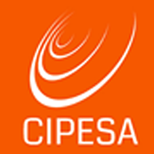CIPESA spoke to the Policy and Regulatory Affairs Adviser at the New Partnership for African Development (NEPAD) eAfrica Commission, Dr Edmund Katiti, abut the status of the cable and how the Commission will engage dissatisfied telecom operators.
Q. Why are EASSy consortium members giving up on NEPAD’s eAfrica Commission, and what is your planned way forward?
The Kigali Protocol defines categories of entities (companies) that can have shareholding in the Special Purpose Vehicles (SPVs) that will develop, own, operate, and maintain the regional ICT broadband network for Eastern and Southern Africa, which comprises a submarine segment and a terrestrial segment. The SPVs will be companies that are open to just about any corporate entity that wishes to invest in the opportunity. Therefore, the SPVs will be formed in the near future, whether one or two telecom operators choose to stay out.
Q. How many signatories of the EASSy memorandum of understanding have pulled out of the project and what reasons have they given?
We are not aware of any telecom operator pulling out of the Eastern Africa Submarine cable project. However, a meeting of prospective shareholders in the SPVs that will own, develop, operate, and maintain the submarine segment of the ICT Broadband Infrastructure Network for Eastern & Southern Africa is being planned in the coming months. That will be the time to know which companies are interested in the network.
Q. What is the eAfrica Commission doing to attract more members and when do you hope construction of the cable will begin?
Answer: The NEPAD e-Africa Commission is in the process of recruiting consultants that will prepare a Project Information Memorandum that will be used to interest prospective shareholders and lead them through negotiation and signing of a shareholders’ agreement. Construction of the cable should begin in the middle of this year.
Q. With 12 members countries having signed the Protocol, when do you think the protocol will be signed and when will financing for the project be secured?
Twelve countries signed the Protocol and it will come into effect when seven of them have ratified it. After this, the countries that did not get to sign the Protocol may accede to it. The financing of the project will be organised by the shareholders in the SPVs mentioned above.
Q. Donald Nyakairu, chair of the EASSy finance committee, says the eAfrica Commission should not hijack the EASSy because it ‘hijacked’ it from the consortium. Will you stop using this name now that some of the MoU signatories seem to be parting ways with the Commission, and are suggesting they could build a different cable?
The Eastern Africa Submarine cable project was adopted and incorporated into the ICT Broadband Infrastructure Network for Eastern & Southern Africa, developed by stakeholders in June 2004, and is a key component of that network. In November 2004, the agreed network was adopted by the NEPAD Heads of State and Government Implementation Committee as a NEPAD flagship project.
In this context, The NEPAD e-Africa Commission, acting within its mandate as NEPAD’s task team for the ICT sector, is coordinating efforts of the governments of Eastern and Southern Africa to put in place a policy and regulatory framework under which this regional ICT broadband infrastructure network should be built.
It must be pointed out that the network goes beyond the submarine cable as it is intended to “connect African countries to one another, and in turn, to the rest of the world”. It should benefit land-locked countries as much as the coastal ones. The network will be developed, owned, operated, and maintained by the SPVs mentioned above. The Commission and governments of the region will remain responsible for policy and regulatory issues.
Q. Kenya and South Africa have unveiled plans to build their own links to the international fibre optic system. Will this not render EASSy less competitive, or even unviable?
The NEPAD e-Africa Commission is coordinating efforts of the governments of Eastern and Southern Africa to put in place a policy and regulatory framework under which a regional ICT broadband infrastructure network should be built. This network will consist of a terrestrial segment and a submarine segment, and is meant to achieve certain developmental objectives, the most important of which is to lower the cost of communication. Any other initiative that has similar noble objectives should be welcomed.
Q. In this scenario, what’s the best way for east and southern Africa to go about investing in marine fibre and making its bandwidth affordable, accessible, and managed to the satisfaction of various stakeholders?
The best way is to ensure that the region has affordable and accessible broadband connectivity is to get the countries of the region to ratify and/or accede to the Kigali Protocol that binds them to jointly develop a regional network that will offer affordable and accessible broadband connectivity on open and non-discriminatory basis.
Q. Who among the MoU signatories has jumped out of the EASSy project? And how will you go about mobilising funds for constructing the cable?
The SPVs that will develop, own, operate and maintain the regional network are yet to be formed but progress is being made towards their formation.
03Apr
